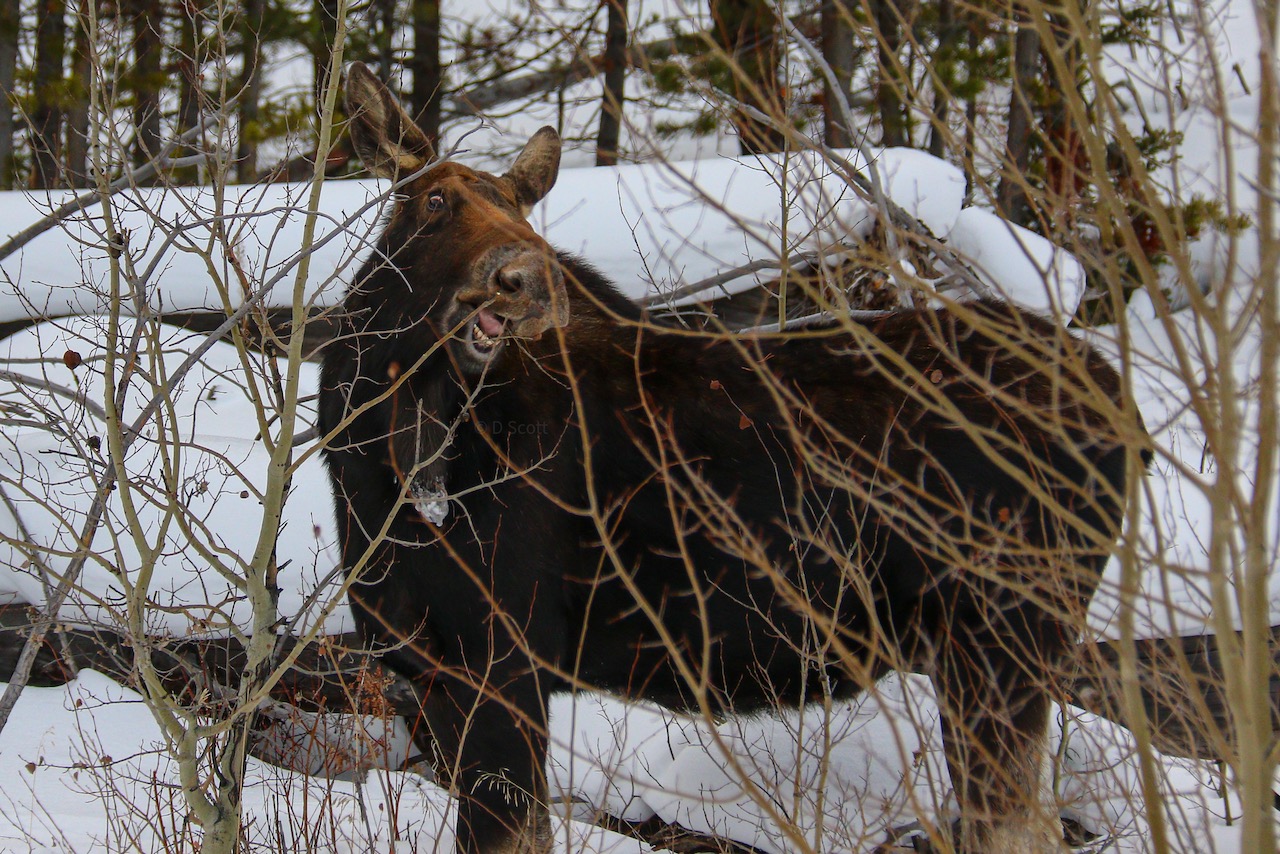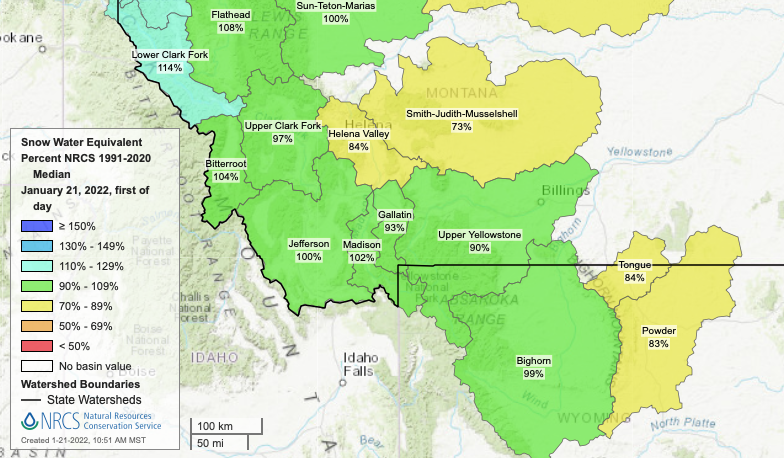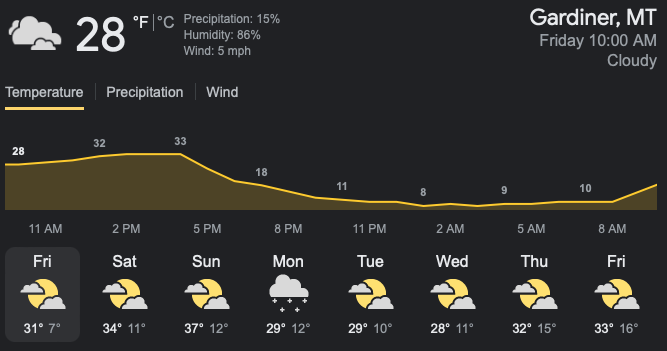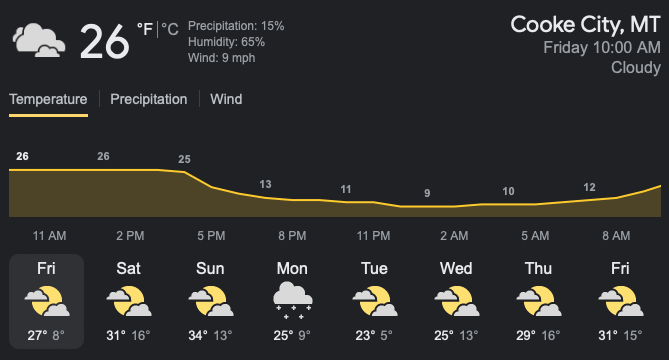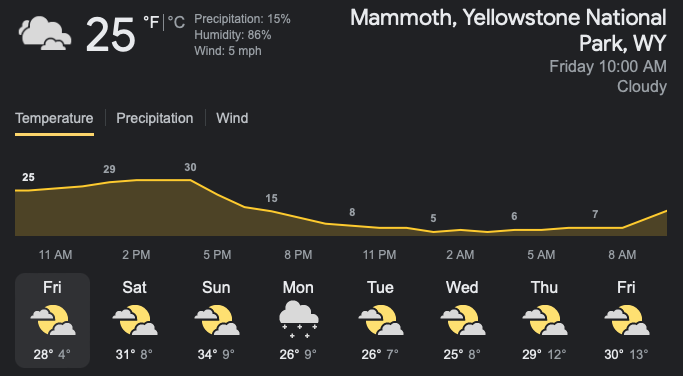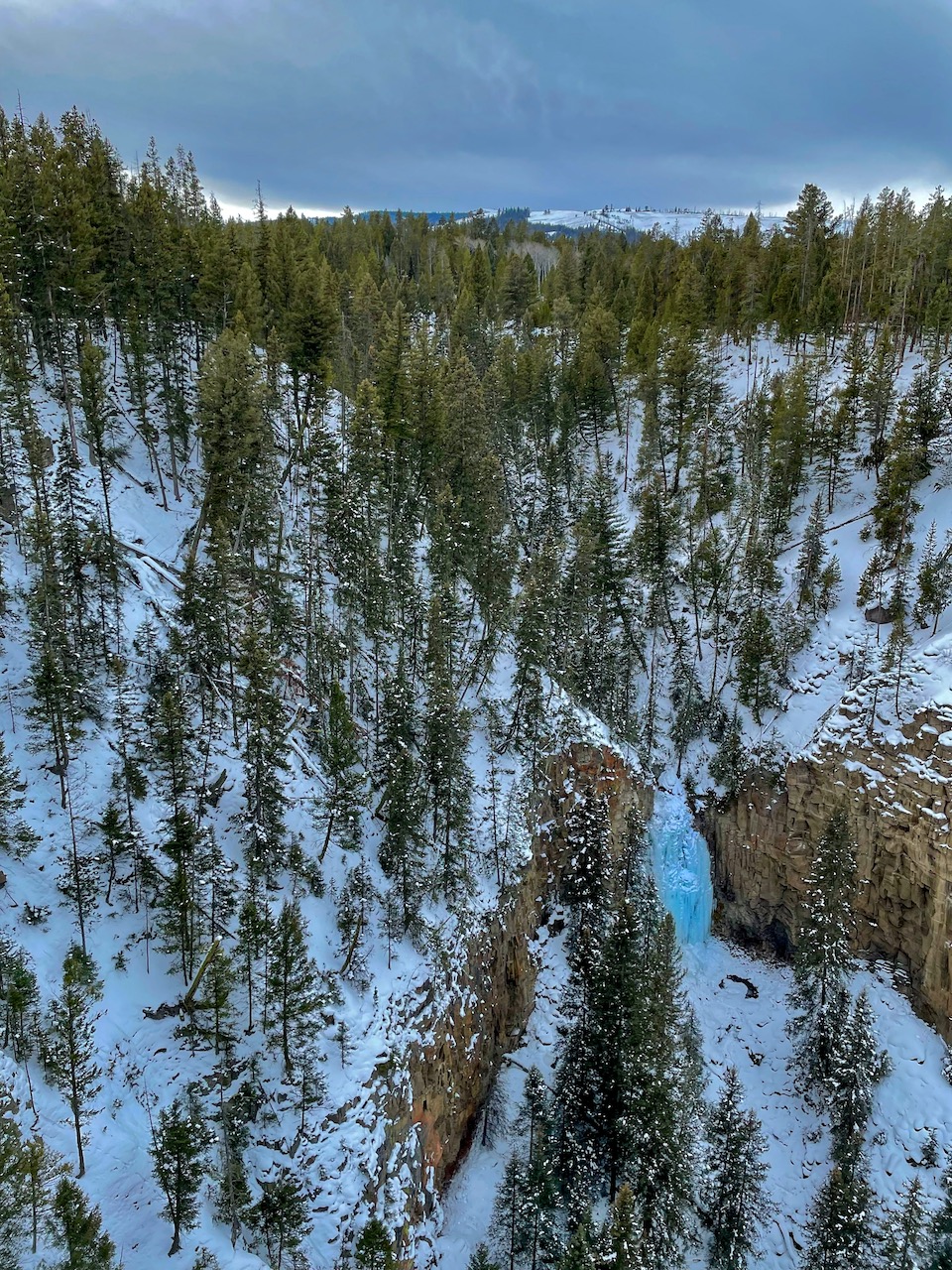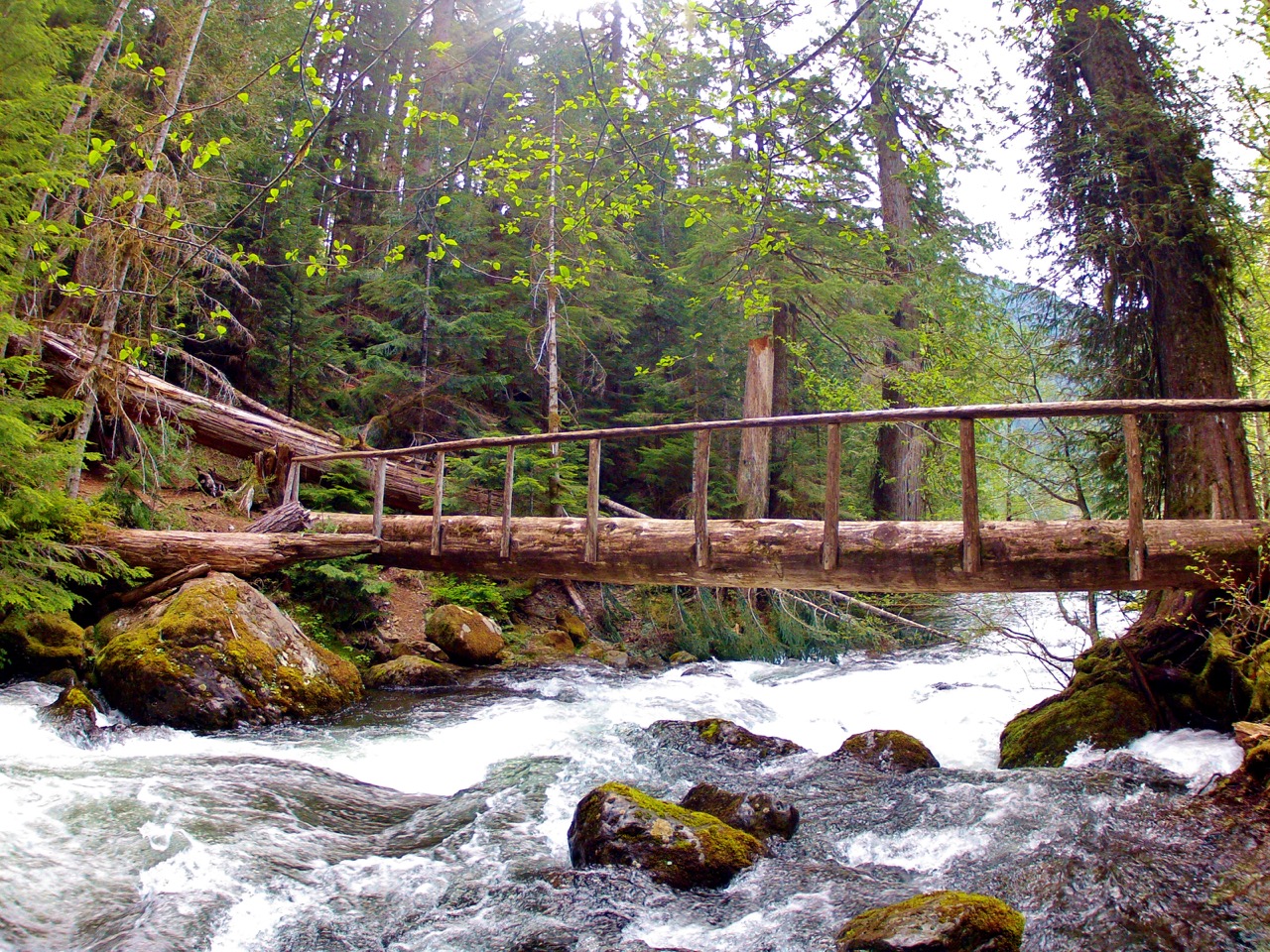This week in Yellowstone, I talk the updated wolf hunt numbers from Montana, share about a wolf kill of an elk on the road in front of visitors, tell about an injured boreal owl, and then encourage you to go chasing frozen waterfalls. If you are headed to the park this coming week, enjoy the sun and temper those wildlife watching expectations.
If you enjoy this or know someone who will, please share this and get ready to visit America’s first National Park. If you want to support my weekly park posts, please pick up a guidebook!
BIGGEST NEWS OF THE WEEK
Wolf Hunt Continues, Impacting Yellowstone’s Wolf Population
The wolf hunting season outside of Yellowstone National Park has continued, directly diminishing Yellowstone’s wolves. The hunting has led to an outcry by conservationists and wildlife enthusiasts, while being celebrated by some in the ranching communities of Idaho, Wyoming and Montana. The issue has led to a flare-up in concern amongst the tourism companies around Yellowstone.
In an article by John Sherer titled, “Wolves in Yellowstone Part I: Can hunting and tourism co-exist?,” includes a quote by the current Yellowstone National Park Superintendent. He stated that “The positive economic impacts of visitors viewing wolves in Yellowstone is estimated to be well over $30 million annually, most of which is spent in Montana communities and counties.”
He went on to say that “The State’s data shows little to no wolf-related depredation incidents occurring in Northern Yellowstone and also shows that the elk population in Northern Yellowstone is “At” the population objectives.”
So why the hunt? The long and short of it is an antiquated idea of controlling predators to protect a few livestock. Each year, the amount of livestock killed by wolves around Yellowstone is minimal. Between 2009 and 2019, the number of depredation reports in Montana dropped from 233 to 100, according to a very detailed annual report by Montana’s Fish, Wildlife and Parks issued in 2020. Ranchers will argue otherwise, but the wolves are not as destructive as the popular narrative they recite would lead you to believe. Instead, the wolf hunt is a vicious and retaliatory response to unhappiness at the reintroduction of a predator 20+ years ago. The hunt is blood lust, and very little more. Yes, controlling predators and animal numbers is needed, but the speed and brutality of the current wolf hunts is based on trophy hunter, anger and blood lust.
The article by John Sherer continues by sharing what the current wolf hunt has done to Yellowstone’s wolves. It reads: “Here’s what the wolf harvest so far looks like by pack; 7 wolves in the Junction Butte pack, 7 in the Phantom Lake pack, 2 from Wapiti Lake, One from Mollie’s, 2 from Bechler in the southwest corner of Yellowstone, and two from unidentified northern Yellowstone packs. According to Montana Fish, Wildlife and Parks, 16 of those were killed in Montana. The Park Service says two were killed in Wyoming and two in Idaho. It’s estimated this leaves 94 wolves left alive in the park.”
I am in no way, shape or form against responsible hunting, but this wolf harvest is not that. Nor does it even claim to be. It is not a good look for the hunting community of these states and hopefully, the hunters who care about their reputation with the rest of the country will step up and help dictate a better way to manage the wolf population once they leave the park.
YELLOWSTONE AREA SNOWPACK
The snowpack around Yellowstone National Park continues to remain steady, just under average for the last 20 years. Along the Madison Range, the Snow Water Equivalent is 102% of normal, the Gallatin Mountains are at 93% and the Upper Yellowstone is at 90% of normal. With minimal snow in the forecast, these numbers should remain steady or decrease slightly over the next week.
WEATHER FOR THE COMING WEEK
This week should be pretty decent weather. Monday will be snowy and I expect that snow will also be around Sunday night and into Tuesday. It shouldn’t be too intense, but use caution off you are driving. Otherwise, expect highs anywhere from the 30s to the single digits and lows in the twenties, teens and colder.
This is the weather.com forecast for three locations for the northern range of the park. I will not be covering the weather for the remainder of the park until the road are open. While the forecasts don’t specifically cover the entire region, they should give a great idea of what to expect all around the region. Always error on the side of caution and be aware that weather can and does change fast in the park, so always be prepared for anything.
WILDLIFE WATCH
This last week was quite the wildlife watching extravaganza for park visitors, with all sorts of awesome things being seen. The highlight for most was watching an elk get taken down by wolves, right next to the road. Caught on video, this incredible sight is extremely rare to witness from a distance, much less up close. Last weekend, an injured boreal owl was spotted near the Tower Ranger Station, sitting still for hours as photographers crowded for a shot. Eventually, rangers came and captured the bird, sending it to a raptor rehabilitation center. Its status is currently unknown.
This coming week, I don’t expect wildlife watching to drop off much. With a fresh wolf kill near the road (the rangers removed the carcass from near the pavement for animal safety) the chances of the wolves of the area staying near and getting another kill are elevated. As always, your best bet for seeing a wolf is to look for the cars with huge antennas parked at overlooks, as well as crowds of people with spotting scopes and huge lenses. More than likely, they are looking for or at wolves. Elsewhere, the moose are still hanging out near Pebble Creek, while herds of bison and elk are spread all around the northern range. Bald eagles are commonly seen near the rivers, while bighorn sheep will be near the cliffs north of Mammoth, the hillside near the hitching post stop east of the Lamar River Confluence, and out near Yellowstone Hot Springs north of the park. Coyotes can be seen sitting on ridges, or wandering the prairies, looking for food and a mate. Finally, a herd of pronghorn have been frequenting the area near the entrance station in Gardiner.
Want the best tips and locations for wildlife sightings on your Yellowstone trip? I wrote a book for that very purpose! Pick up your digital ebook or paperback copy now!
ROADS AND CAMPGROUNDS
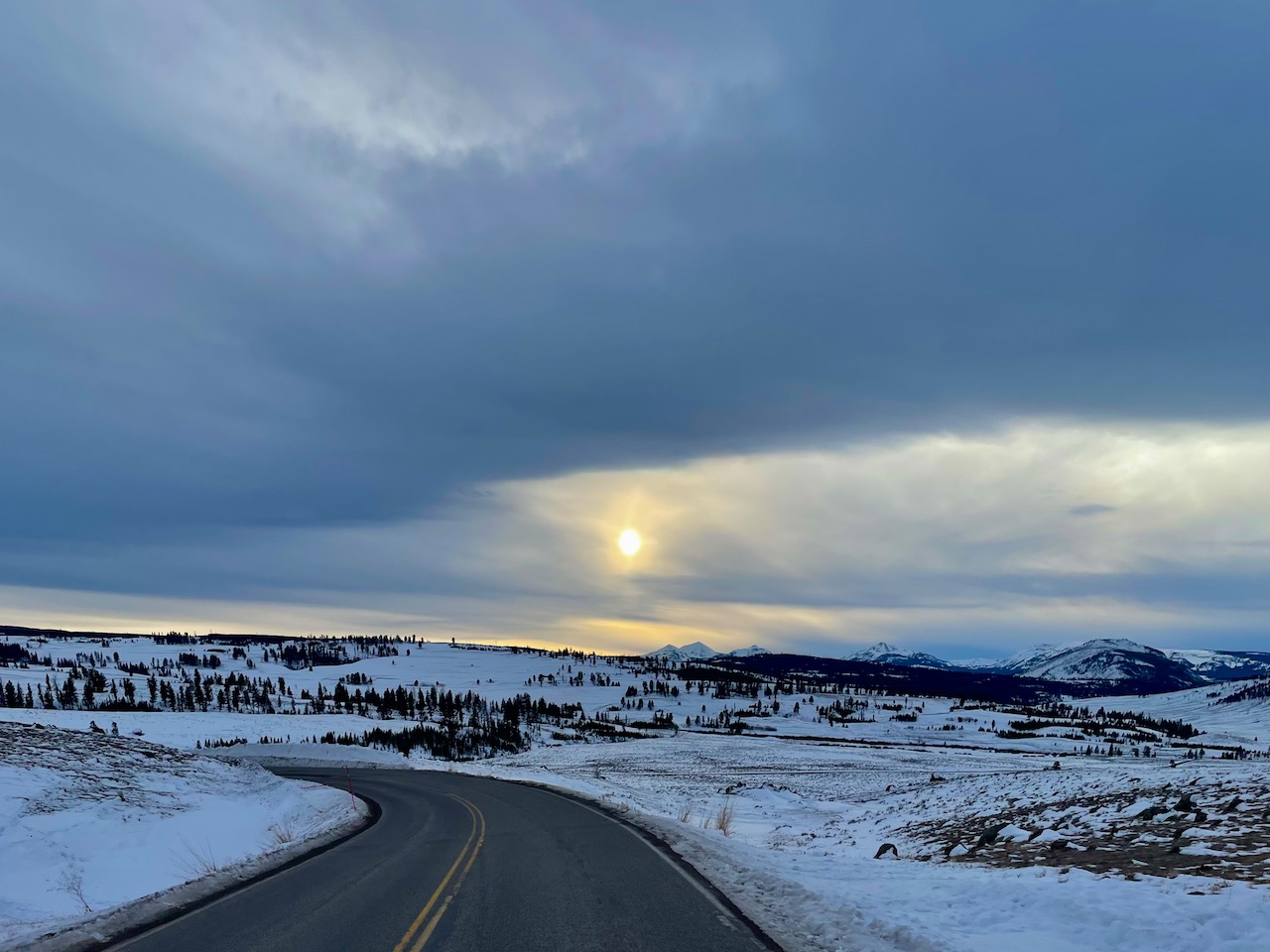 As of Friday the 21st, the roads look like they should be great nearly all week. Expect potential drifts even day, and be aware of the incoming snow on Monday. This could impact travel on Sunday night, Monday and Tuesday morning. Other than that, there will be icy spots on shaded corners, built up snow in some areas and then bare pavement in other spots. Overall, this is a good week for the roads and drivers. That being said, pay attention to the shoulders while driving, as they do not exist, leading to many cars driving off the road in good conditions. Go sloe, be safe and keep your eyes on the road.
As of Friday the 21st, the roads look like they should be great nearly all week. Expect potential drifts even day, and be aware of the incoming snow on Monday. This could impact travel on Sunday night, Monday and Tuesday morning. Other than that, there will be icy spots on shaded corners, built up snow in some areas and then bare pavement in other spots. Overall, this is a good week for the roads and drivers. That being said, pay attention to the shoulders while driving, as they do not exist, leading to many cars driving off the road in good conditions. Go sloe, be safe and keep your eyes on the road.
For up-to-date information consult the map above, call (307) 344-2117 for recorded information, or sign up to receive Yellowstone road alerts on your mobile phone by texting “82190” to 888-777 (an automatic text reply will confirm receipt and provide instructions). Anticipate possible road closures due to inclement weather and dangerous driving conditions.
Planning on camping in the park this week?
I sound like a broken record here, but I want to be consistent in case this is your first time reading this report. The only front country campground currently open in the park is Mammoth and it is pretty much empty every night. This weekend and coming week will be no different. You probably won’t have any neighbors and may share the entire campground with a handful of people. If you love winter camping, I highly suggest doing this once. You can check the status of campgrounds in the park online here.
HIGHLIGHT OF THE WEEK
Frozen Waterfalls
With winter in full force, visitors to the park shouldn’t hide from the cold. Instead, they should embrace it by gazing upon the frozen features of the Northern Range. One of the more unique things to do in the frigid days is to take in views of the frozen waterfalls of the region. Often deep blue in color, these frozen waterfalls are not only picturesque themselves, but also showcase the incredible scenery of the park. I could probably write a book on this, but instead, I’ll share a few favorites to wander and enjoy.
The first is the easy to view Undine Falls. Located at the top of the rising road east of Mammoth, this overlook with a large parking area gives a beautiful glimpse of the falls and canyon. The roughly 60-100 foot tall waterfall is the tumbling Lava Creek, now mostly frozen. You can take in the view from the parking area, or those more adventurous can park at the Lava Creek Picnic Area, walk across the road and follow the trail to a ridiculously underrated viewpoint near the falls. Walk a few hundred feet further west and you’ll be on a cliff’s edge, gazing down toward Mammoth and Gardiner. Do not get too close to the edge, as it can cornice and collapse under weight.
A little past this falls is the short trail to Wraith Falls. This is a fun, short trek in the snow to an overlook of a frozen waterfall. Usually, this waterfall is one I skip, as it is on the lower than average beauty scale in the summer. But Ice and snow changes that. The hike is one mile total with minimal elevation gain. However, be aware that the region is frequented by bison who can be cranky. Keep your distance and turn around if needed.
Your other two great options are the hikes to Tower Falls and to Lost Creek Falls, both starting at the Roosevelt Junction bathrooms. The route to Tower is well-traveled, following the road up to the waterfall. Lost Creek Falls is a little harder to find and those hoping for some information on this can directly contact me and I’ll of my best to give you all the information. What makes Lost Creek Falls so great is that it is rarely visited and can be seen both from above and below. Again, if you want to see it, just ask me, as the details are a bit long for this already ranting post.
TIP OF THE WEEK
Temper Expectations
It is easy and justified to get ridiculously excited about your upcoming trip to the park. Online, thousands of wintry images can easy be found, stoking the expectation of seeing everything you are looking at on your phone in person. I in no way want to damped your enthusiasm for the trip, but one thing I have seen is people getting frustrated that their experience isn’t the same as what they see online. I am guilty of this too. Sometimes I’ll go to the park and have a “bad wildlife day,” where I only see a few bison, some elk, a couple bighorn sheep, a few eagles and maybe a coyote or two. I have talked with others who are visiting the park for the first time who also feel disappointment at their “bad luck.”
The thing is, seeing wolves and otters and moose and hunting foxes is really amazing, but not common. Those of us lucky to visit the park each week have a few experiences like that a winter, and often feel extremely lucky and blessed to have them. On day when you don’t see a life-changing wildlife sighting, it can feel a little crushing, especially if this is your only trip to Yellowstone.
Don’t despair though. You will, with 99% certainty, see wildlife that is incredibly rare for North America. Seeing a bison, in the wild, that has always been wild and can eugenically be traced back to the last ice age in the region, is an awesome thing to see. Even if it is just one, alone. Also, if you seem to be having difficulty seeing wildlife, your best bet is to drive the road from Gardiner to Pebble Creek a few times in a day. Stop when you see people looking through binoculars. Ask what they are looking at. Stop the car for a bit and scan a hillside, a valley or a canyon and chances are, you’ll see something. You may even get a view of a lifetime of a bison waking up from a nap, like the one pictured above.
The thing about wildlife in Yellowstone is that it is always moving, always on the go. You can round a corner and see nothing, then the car behind you can have a coyote carrying an ermine in its mouth pass right in front of their car. It is timing and luck and miles covered. The more you move, the more you may see.
WANT TO KNOW MORE?
Curious about something not mentioned in the post?
Send me an email or message on social media and let me know how I can help.

